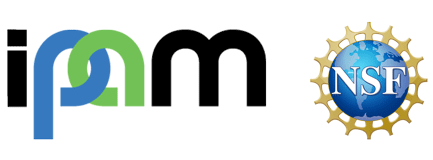White Paper: New Mathematics for the Exascale: Applications to Materials Science
This white paper is an outcome of IPAM’s spring 2023 long program, New Mathematics for the Exascale: Applications to Materials Science.
The white paper summarizes the activities and outcomes of the Long Program “New Mathematics
for the Exascale: Applications to Materials Science” which was held at the Institute of Pure and
Applied Mathematics (IPAM) from March 13 to June 16, 2023. It briefly explores some of the
current open questions and future directions in the field of exascale computing with applications
to materials sciences. The program included a series of tutorials followed by four focused
workshops:
● New Mathematics for the Exascale: Applications to Materials Science Tutorials” provided
an introduction to major themes of the entire program, in order to build a foundation for
the participants who have diverse scientific backgrounds.
●Workshop I: Increasing the Length, Time, and Accuracy of Materials Modeling Using
Exascale Computing focused on recent development of new mathematical approaches
to intensive calculations at massive scale, particularly new ways to improve scalability
(both weak and strong) and extend the size, time, and accuracy of simulations.
● Workshop II: Scale-Bridging Materials Modeling at Extreme Computational Scales
focused on new mathematical approaches to multiscale/multiphysics modeling, with a
particular emphasis on theoretical and numerical challenges faced at the exascale.
● Workshop III: Complex Scientific Workflows at Extreme Computational Scales was
aimed at developing new mathematical and computational approaches that enable the
inclusion of massive-scale computing into complex scientific workflows.
● Workshop IV: Co-design for the Exascale and IPAM Hackathon brought together code
developers, mathematicians, method developers, computer scientists, and engineers from
the computer vendors for a week of discussion, hands-on development, and
implementation of the new ideas generated during the program.









